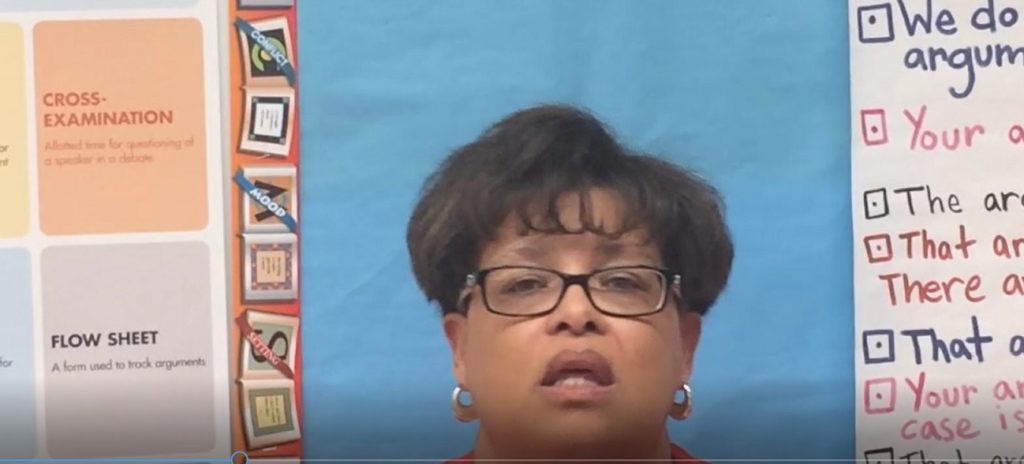Argument-Centered Educator Interview: Donna Lawrenz, Peirce International School
Argument-Centered Education conducts periodic interviews with leading educator-practitioners of argument-centered instruction. This short video interview of Donna Lawrenz, a veteran educator of 7th grade language and literature at Peirce International School, is linked to her photo, and edited and condensed in the excerpt underneath. Ms. Lawrenz has been working with Argument-Centered Education for two years.

Excerpted Interview of Argument-Centered Educator Donna Lawrenz
Q. How is Peirce International School using argument-centered instruction?
Peirce is using argument-centered instruction as part of its International Baccalaureate Middle Years Programme. Argument-centered instruction is inquiry-based, so it is a natural fit for IB.
Q. How are you using argument-centered instruction in your classrooms?
At this point, argument-centered instruction provides the foundation of my instruction. I use argument-centered practices everyday. Students are required to generate claims, discover supporting evidence, and come up with their own reasoning. Everything that we’re reading and we’re viewing, we’re generating claims, identifying supporting evidence, and thinking through reasoning in response.
Q. How has the use of argument-centered instruction affected student learning?
What I’ve seen in my classrooms since starting my work with Argument-Centered Education is certainly in an increase in higher-order thinking skills. I’ve seen improved organization in writing. The growth in writing has been impressive. The progress in the classroom has been very real, and in addition we have noticed a strong growth in achievement on standardized tests.
Q. Tell us about the video clips of the table debates on The Lord of the Flies that we are about to view.
[The video of the clips referenced here are available here and here.]
This class has some of the widest range in learning styles and current reading levels, and yet what happens during an argument-centered project, and that you can see, is that all students are fully engaged and conducting the higher literacy practices that we as teachers across the literacy spectrum are striving to activate.

